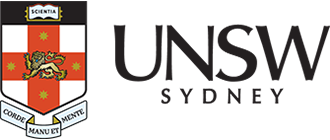Fourth Macquarie Marshes waterbird survey complete
The fourth and final 2024–2025 Macquarie Marshes waterbird survey was completed in February 2025. A total of 34 waterbird species were recorded. Inundation was variable across the 13 wetland sites.
Some sites were dry in the east and south of the Macquarie Marshes, while others (Louden’s Lagoon, Sinclair’s Lagoon, and Horseshoe Lagoon) were inundated and full of birdlife.
New flows were arriving from upstream rainfall into Buckiinguy Swamp in the southern Marshes, where more than two hundred straw-necked ibis (Threskiornis spinicollis), white-necked herons (Ardea pacifica) and masked lapwings (Vanellus miles) were feeding nearby.
Two of the 34 waterbirds recorded are listed species – the brolga (Grus rubicunda) (NSW Government list) and sharp-tailed sandpiper (Calidris acuminata) (Commonwealth Government list).
The largest counts observed at any individual survey site were straw-necked ibis (190 birds), grey teal (Anas gracilis) (228), royal spoonbill (Platalea regia) (230) and Australian pelican (Pelecanus conspicillatus) (85). Five waterbird species were observed at 50 per cent or more of the survey sites in the February surveys: Eastern great egret (Ardea alba), Australian white ibis (Threskiornis moluccus), royal spoonbill, white-faced heron (Egretta novaehollandiae) and Pacific black duck (Anas superciliosa).
Broods (groups of young being cared for by adults) of royal spoonbills and black swans (Cygnus atratus) were recorded.
With the drying back of some wetland areas and mud starting to appear, a few counts of small wading birds that prefer mudflats, such as dotterels (11), stilts (12), and sandpipers (2), were recorded.
The data from the four completed Flow-MER surveys, together with existing NSW Department of Climate Change, Energy, the Environment and Water (NSW DCCEEW) ground survey data, will allow researchers to study changes in species composition in relation to the season, water use, weather conditions and water in the landscape to inform environmental water decision-making.
The survey was conducted by the NSW DCCEEW on behalf of the University of New South Wales (UNSW).
Variable water inundation was observed across the Macquarie area during the waterbird survey (Photos: NSW DCCEEW).
